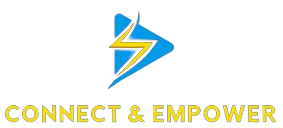What Lessons from Franken Laptops Show About Device Repurpose
Introduction
In the ever-evolving world of technology, the concept of repurposing devices has gained immense traction. One fascinating example that highlights this trend is the phenomenon of ‘Franken laptops.’ These unique machines, created by combining parts from various laptops, serve as a testament to creativity, resourcefulness, and sustainability. In this article, we will delve into the lessons that Franken laptops teach us about device repurposing, examining historical context, practical applications, and future predictions.
The Rise of Franken Laptops
Franken laptops emerged out of necessity during a time when many consumers faced the dilemma of obsolete technology. As older laptops became slower and less efficient, tech enthusiasts and DIYers began to explore ways to breathe new life into these machines. By harvesting components—motherboards, screens, keyboards, and more—from different models, they constructed customized laptops tailored to their specific needs.
Historical Context
The notion of repurposing technology is not new. Throughout history, societies have adapted and reused materials to create new solutions. From ancient civilizations recycling metal to modern-day furniture made from reclaimed wood, the drive to minimize waste and maximize utility has always been present. The advent of Franken laptops is merely a contemporary manifestation of this age-old practice, fueled by the rapid pace of technological advancement.
Lessons Learned
- Resourcefulness: Franken laptops teach us to be resourceful. Instead of discarding old devices, we can creatively combine them to form something functional and unique.
- Sustainability: The environmental impact of electronic waste is significant. By repurposing laptops, we contribute to sustainability efforts and reduce e-waste.
- Customization: Franken laptops allow users to tailor their devices to their preferences and needs, promoting a sense of ownership and individuality.
- Cost-Effectiveness: Building a Franken laptop can be more affordable than purchasing a brand-new device, making technology more accessible.
Practical Applications of Device Repurposing
The lessons learned from Franken laptops extend beyond individual projects. Businesses and organizations can also benefit from device repurposing in various ways:
1. Educational Institutions
Schools and universities can implement programs to refurbish old laptops for students in need. Not only does this provide essential resources to students, but it also instills a sense of responsibility towards technology and the environment.
2. Non-Profit Organizations
Non-profits can collaborate with tech-savvy volunteers to create Franken laptops for underserved communities. This initiative can bridge the digital divide, ensuring that everyone has access to technology.
3. Businesses
Companies can establish employee programs encouraging the repurposing of old devices. By doing so, they not only save money but also promote a culture of innovation and sustainability.
Future Predictions
As technology continues to advance, the practice of creating Franken laptops and repurposing devices is likely to evolve. Here are some predictions for the future:
- Increased awareness of sustainability will lead to more communities embracing device repurposing.
- Advancements in technology will make the process of assembling Franken laptops easier and more efficient, attracting a broader audience.
- Collaboration between tech companies and educational institutions will foster innovative programs focused on repurposing technology.
Conclusion
The lessons learned from Franken laptops serve as a powerful reminder of the importance of resourcefulness, sustainability, and customization in our technology-driven world. By embracing the practice of repurposing devices, we can not only extend the life of our electronics but also contribute positively to our environment and society. As we look to the future, let us continue to innovate and find solutions that reflect our commitment to a sustainable and connected world.
